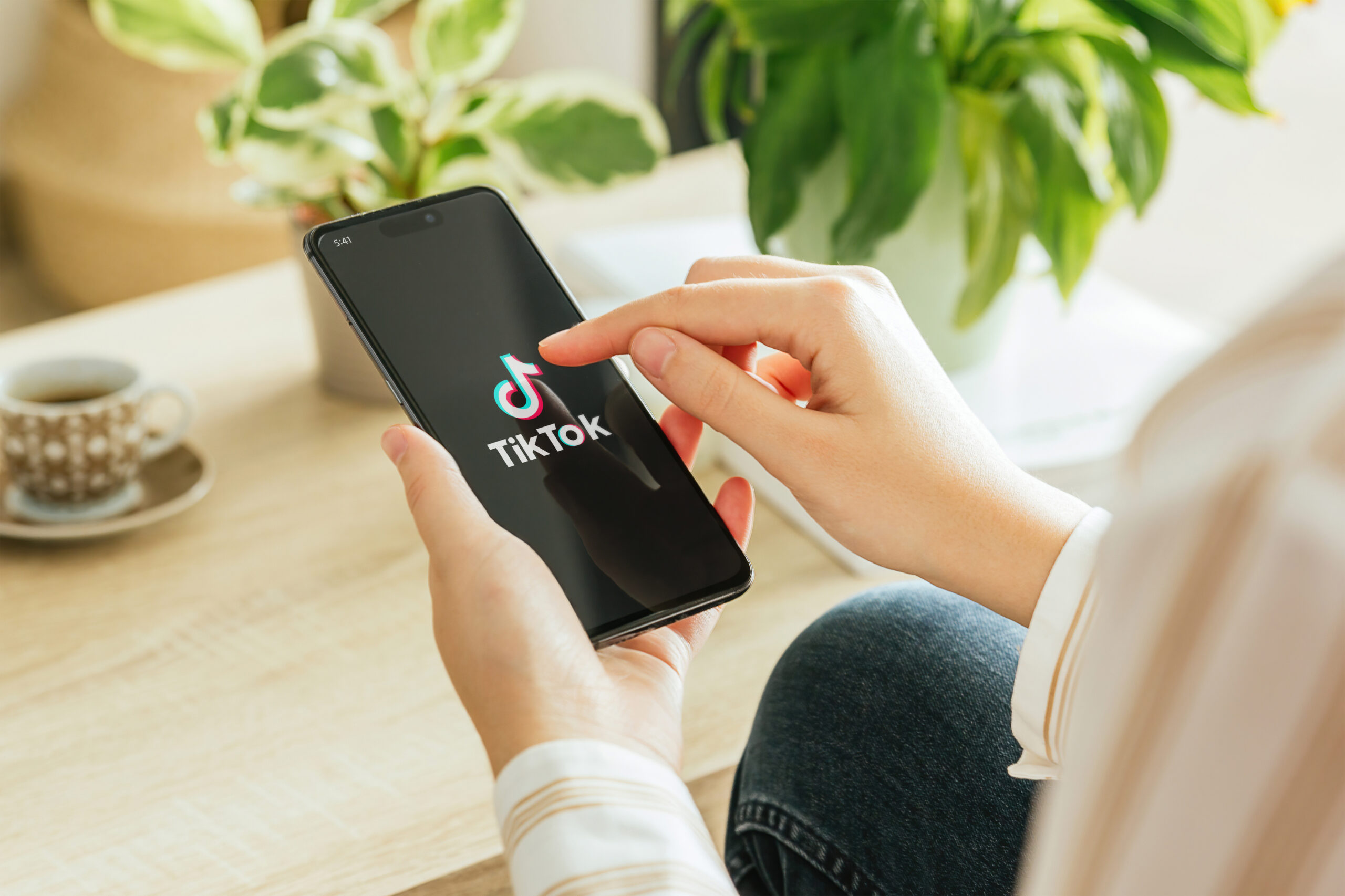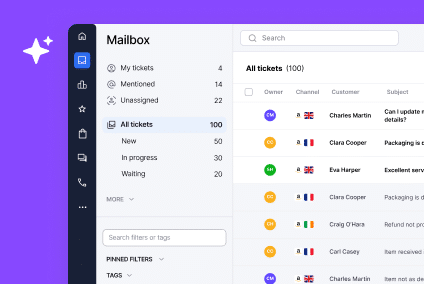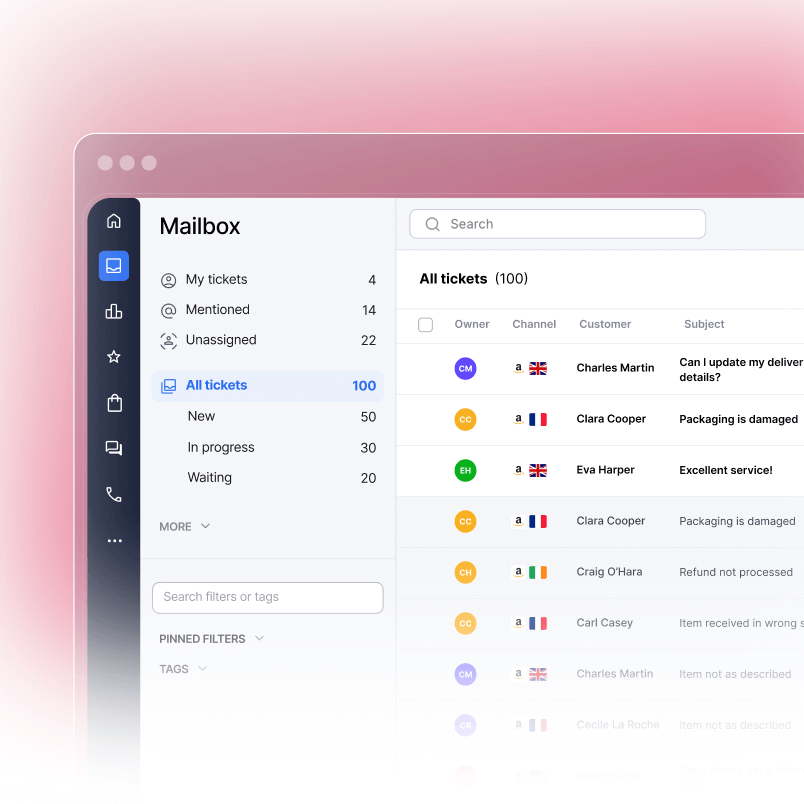How do you integrate TikTok Shop with Shopify and your other marketplaces without creating chaos? The short answer is to set up a TikTok Shop integration that syncs catalog, inventory, orders, and messages in near real time, then run everything from one organized inbox. Do that well and you get cleaner listings, fewer oversells, faster replies, and a setup that actually scales.
This guide shows where TikTok Shop integration fits, how to wire it to Shopify and other marketplaces, what to automate first, and the support workflows that make the whole thing feel smooth for your team and your customers.
In the US, TikTok Shop sales increased 120% year-on-year in the first half of 2025, reflecting strong shopper and seller momentum.
What is TikTok Shop integration and why does it matter?
When we talk about TikTok Shop integration, we mean a live connection between TikTok Shop, your storefront platform, and any marketplaces you sell on. Products and variants stay aligned, stock updates flow both ways, orders land where your team can fulfill them, and support threads show up alongside order data.
Why it matters for growth:
- You publish once and sell in more places with a cross-platform listing that stays in sync.
- Inventory sync reduces oversells when a post goes viral and orders spike.
- API sync keeps order events and tracking aligned across your stack so customers get accurate updates.
- Your team gets one backend integration to manage rather than a patchwork of manual exports.
TikTok Shop now spans 70+ million products across 750+ categories.
How to connect TikTok Shop to Shopify and other channels
There are a few common routes, and you can mix and match based on your stack.
Connect TikTok Shop to Shopify
If the goal is to connect TikTok Shop to Shopify, link your catalog and orders so Shopify remains the source of truth. New products and updates flow to TikTok, and TikTok orders come back to Shopify for fulfillment. That keeps inventory simple and lets you reuse your existing shipping, tax, and notification settings.
Connect TikTok Shop to marketplaces
Selling on Amazon, eBay, or Etsy as well? Use a connector or help desk that understands marketplace order flows and maps them to TikTok. This is where TikTok marketplace integration earns its keep: one feed for products, consistent attributes, and unified order handling. If Etsy is in your mix, plan your TikTok and Etsy integration so titles, attributes, and variations match Etsy’s format to avoid listing errors.
Keep the support side in view
Settle on one place where your team responds. If you already manage Shopify email and chat in a help desk, bring TikTok messages into that same queue so agents see orders and tracking next to every conversation. This saves minutes on every reply and keeps tone consistent.
More than 171,000 local and small businesses sell on TikTok Shop, and sales by small US businesses are up 70% year over year as of mid 2025.
What to automate first on TikTok Shop
Good news: you don’t need to automate everything on day one. So, start with the jobs that protect revenue and your customer experience.
1) Listings that publish once and stay clean
Create a single master catalog. Push to TikTok Shop and your marketplaces from that source. Keep titles, images, attributes, and compliance data aligned so you don’t face a cascade of listing takedowns. That’s cross-platform listing in practice.
2) Inventory sync that survives a viral moment
When a video takes off, inventory sync is your safety net. Set rules for buffers on fast sellers, and pause spend or switch variants when stock drops below a threshold. You’ll avoid oversells and messy make-goods.
3) Orders that flow to one place
Map TikTok orders to your main fulfillment system so labels, pick lists, and notifications follow the same path as Shopify or marketplace orders. This is where backend integration reduces friction for ops and support.
Using a combination of Product, Video, and LIVE formats in Shop Ads has been shown to drive 2.4× GMV growth versus fewer formats.
How to manage messages and cases from one inbox
Once orders flow, it’s time to keep conversations tidy. Centralizing support is what makes multichannel TikTok Shop manageable.
- Route “Where’s my order” to a shipping queue and pull in carrier status and ETA automatically.
- Detect common return reasons and attach the right label or steps.
- Keep presales in a product queue so specialists can answer fast.
- Suppress review nudges while a return is open, then send a short check-in after it’s resolved.
When TikTok is one of several sales channels, run everything through one hub so the same rules apply across your stack. That’s how you avoid one channel becoming the outlier that breaks SLAs.
Natural places to add your internal links here and in the next section:
- If your team runs multiple marketplaces, a single hub for multichannel eCommerce software keeps ownership and SLAs clear.
- If Shopify is your source of truth, connect your store to a Shopify help desk so agents reply with order context on screen.
- As TikTok volume grows, bring threads and orders into the same queue with TikTok Shop support so you’re not switching tabs.
Tekeir used eDesk to pull website, marketplace, and social messages into one place and automated timely, multi-language replies to keep SLAs on track.
Real TikTok Shop workflows to copy
You can start small and still see a real impact. Pick two or three of these and try them for seven days.
“Where’s my order” without the scramble
Auto-tag messages that mention tracking or delivery. Your reply template pulls the live carrier status and ETA. If scans stall, send a proactive update before the buyer asks again. That one step reduces duplicates and protects your first response time.
Returns that don’t drag
Detect common return reasons and insert the right label or steps automatically. Suppress feedback requests while a case is open. After you resolve the issue, send a quick check-in. Many potential negatives turn into neutrals or positives with that last touch.
Presales that raise AOV
Route fit or compatibility questions to a specialist. Suggest a bundle or alternative and save strong replies as snippets so everyone can use them. This turns organic interest from TikTok into bigger baskets.
Inventory pressure after a viral post
Set low-stock thresholds that trigger a restock task and pause promo spend at the same time. If the product is out of stock, switch the CTA to a similar SKU automatically.
One queue for every channel
Bring TikTok messages into the same place as Shopify, Amazon, and eBay so your team works from one set of templates and timers. This keeps tone, policy, and response time consistent everywhere.
Creators and brands hosted over 8 million hours of LIVE shopping on TikTok Shop in the US in 2024.
What to remember and what to do next
Here’s a simple plan you can share in stand-up tomorrow.
What to remember
- TikTok Shop integration turns shoppable content into real orders by syncing products, inventory, and fulfillment.
- The risky moments are viral spikes and fragmented support. Inventory buffers and one queue fix both.
- Reusing rules across channels is the secret to omnichannel commerce that doesn’t burn out your team.
- Accurate “Where’s my order” replies are your best defense against cases and low feedback.
What to do next
- Connect your catalog so TikTok Shop integration pulls products from a single source and maps variants correctly.
- Turn on three basics: inventory sync with low-stock buffers, order import to your main fulfillment system, and shipping confirmations with live tracking.
- Add two support automations: auto-tag WISMO and route returns to the right owner.
- Build five templates with variables: product availability, shipping update with tracking, delivery follow-up, return instructions, and partial refund options.
- Centralize your support: put messages and orders in one place so the same rules apply across channels. If Shopify is home base, bring your store into a Shopify help desk. If TikTok volume is growing fast, add TikTok Shop support so agents never leave the inbox. And if you sell on several marketplaces already, run the whole thing through multichannel eCommerce software to keep reporting clean.
Wire up TikTok and the rest of your stack without adding busywork? Book a Demo and we’ll show how to connect your catalog, turn on the right automations, and centralize your support so it’s plain scaling for you and your team.
FAQs
What is TikTok Shop integration?
It’s the two-way connection that syncs products, inventory, orders, and messages between TikTok Shop and your other platforms. With TikTok Shop integration in place, you publish once and fulfill in one flow.
Can I connect TikTok Shop to Shopify and still fulfill from Shopify?
Yes. Most teams connect TikTok Shop to Shopify. That way, Shopify stays the source of truth for catalog, inventory, and fulfillment while TikTok drives demand.
What about Amazon, eBay, or Etsy?
Use a connector or help desk that supports TikTok marketplace integration as well as your other channels. If you’re planning a TikTok and Etsy integration, line up attributes and variations so listings pass Etsy checks on the first try.
What should I automate first?
Start with inventory sync, order import, and shipping confirmations. Those three cut oversells, reduce “Where’s my order,” and keep buyers in the loop.
Will this require developers?
The basics don’t. You can start with no-code connectors and prebuilt workflows. As you scale, you might add light backend integration for edge cases and custom feeds.
How do I keep support consistent across channels?
Run everything from one organized inbox. Use shared templates, routing, and timers so “Where’s my order,” returns, and presales follow the same playbook everywhere.




